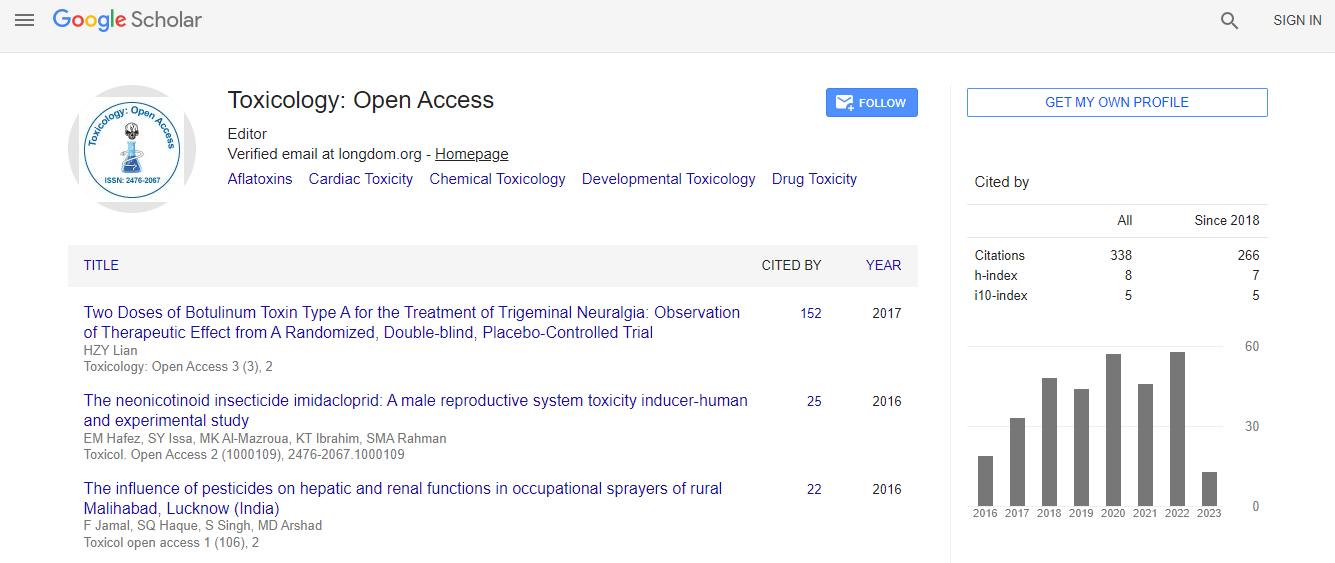Research Article
Immunotoxicity of Zinc Oxide Nanoparticles and Municipal Effluents to Fathead Minnows
Gagne F1*, Fortier M1, Fournier M2, and Gagnon C21Aquatic Contaminants Research Division, Water Science and Technology, Environment Canada, 105 McGill, Montreal, QC, Canada
2INRS-Institut Armand-Frappier, 531 Boul. des Prairies, Laval, QC, Canada
- *Corresponding Author:
- Gagne F
Aquatic Contaminants Research Division
Water Science and Technology
Environment Canada, 105 McGill
Montreal, QC
Canada,
E-mail: francois.gagne@canada.ca
Received date: June 15, 2016; Accepted date: June 20, 2016; Published date: June 25, 2016
Citation: Gagne F, Fortier M, Fournier M, Gagnon C (2016) Immunotoxicity of Zinc Oxide Nanoparticles and Municipal Effluents to Fathead Minnows. Toxicol Open Access 2:113. doi:10.4172/2476-2067.1000113
Copyright: © 2016 Gagne F, et al. This is an open-access article distributed under the terms of the Creative Commons Attribution License, which permits unrestricted use, distribution, and reproduction in any medium, provided the original author and source are credited.
Abstract
The presence of nanoparticles in sewage water has raised concerns about the cumulative toxicity of municipal effluent to aquatic organisms. The purpose of this study was to examine the effects of dietary zinc oxide nanoparticles (nano-ZnO) and ZnCl2 (at 100 ng total Zn/g food) in adult fathead minnows Pimephales promelas during continuous exposure to a physico-chemically treated effluent for 21 days. Immunocompetence was determined by assessing leucocyte viability, phagocytosis activity, oxidative stress (lipid peroxidation) and DNA strand breaks in gills. The results revealed that leucocyte viability decreased with increasing effluent concentration, while it increased somewhat in fish fed either form of Zn. The decrease in viability was not observed in fish exposed to the municipal effluent that were fed either form of Zn. Phagocytosis activity decreased after an initial increase at a low concentration of the effluent (5% v/v), while it readily decreased in fish fed either form of Zn. The decrease was also observed in fish fed either form of Zn that were exposed to the effluent. The data revealed that nano-ZnO toxicity differed from ZnCl2 effects, but when the fish were both exposed to the effluent and fed a nano-ZnOcontaminated diet, the overall effects closely resembled the effects in fish fed a ZnCl2 -supplemented diet. In conclusion, ingested nanoparticles in food could affect the immune system of fish exposed to municipal wastewaters differently than non-exposed fish, rendering the exposed fish more vulnerable to microorganisms.

 Spanish
Spanish  Chinese
Chinese  Russian
Russian  German
German  French
French  Japanese
Japanese  Portuguese
Portuguese  Hindi
Hindi 